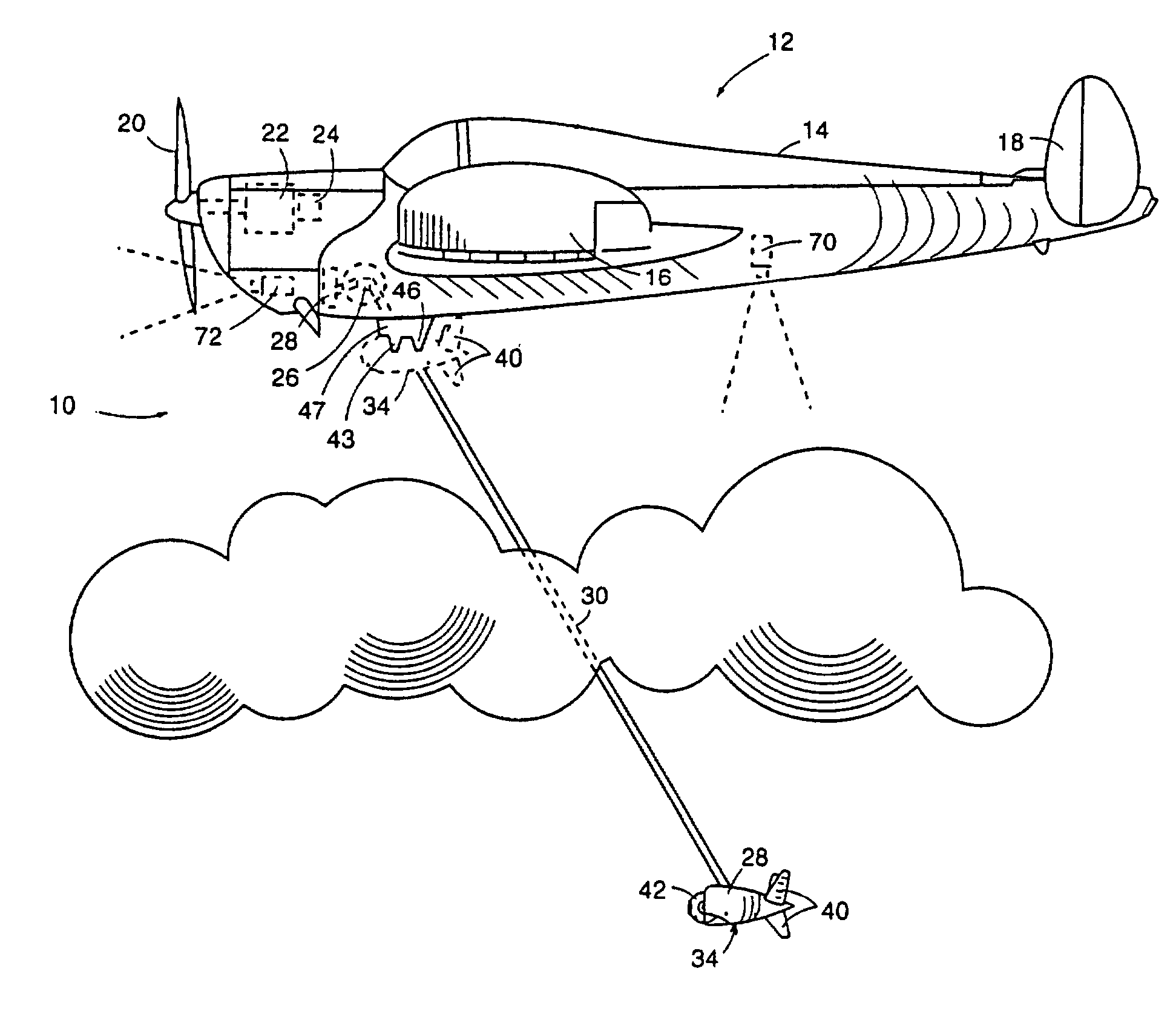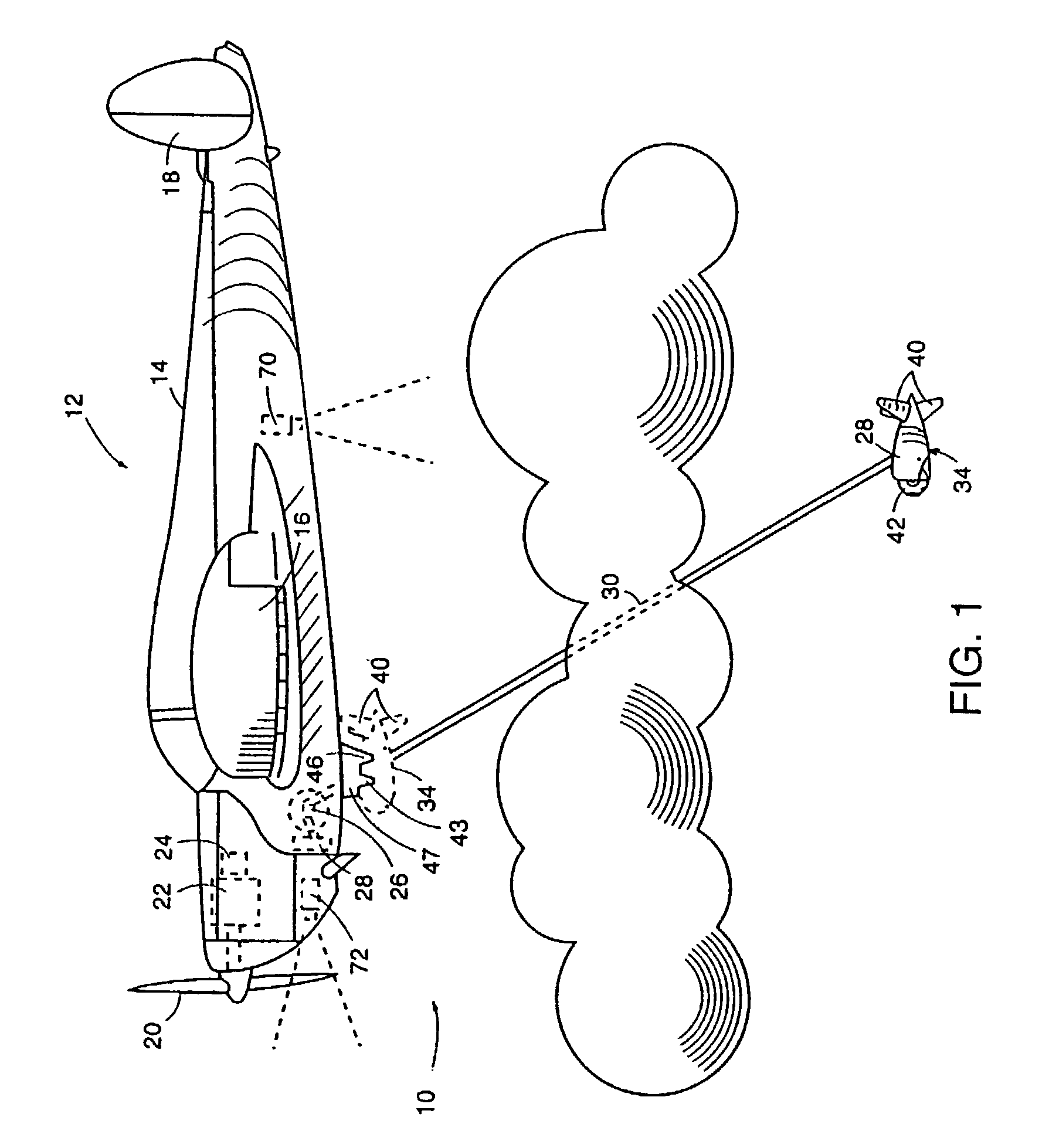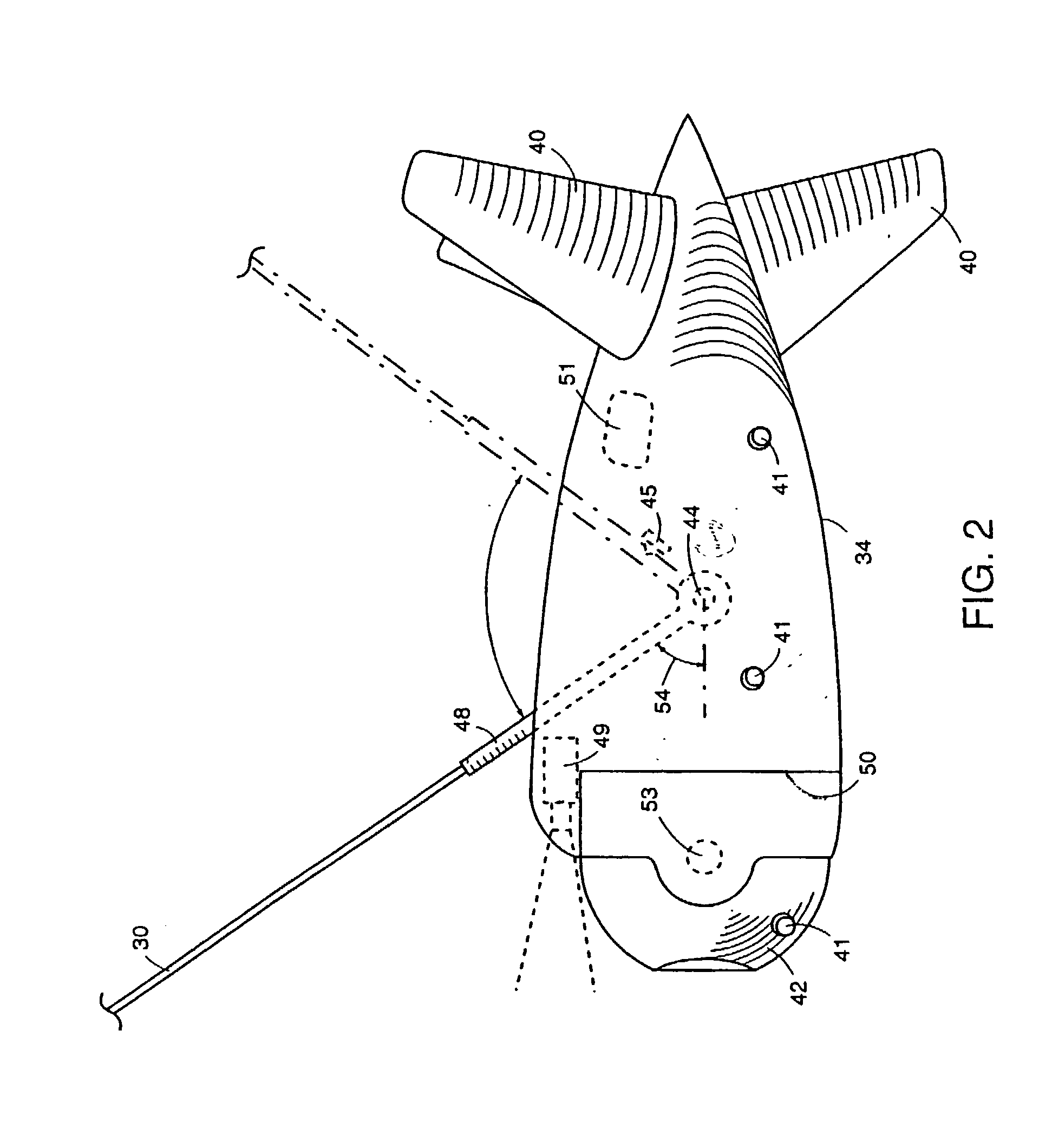Survivability and mission flexibility enhancements for reconnaissance aircraft
a technology of mission flexibility and aircraft, which is applied in the direction of cosmonautic vehicles, firework flares/torches, aircraft display rockets, etc., can solve the problems of difficult visual detection, low observable aircraft operating at night, and large sensor pods, so as to reduce the signature of the parent aircraft, less stealth, and less expensive
- Summary
- Abstract
- Description
- Claims
- Application Information
AI Technical Summary
Benefits of technology
Problems solved by technology
Method used
Image
Examples
Embodiment Construction
[0022] Referring now by reference numerals to the drawings and first to FIG. 1, the aircraft system is generally indicated by 10 and consists of an aircraft 12 and an extendable sensor / targeting pod 34 shown in its extended position in solid lines and in its retracted position in dashed lines. The aircraft 12 includes a fuselage 14, wings 16, horizontal and vertical tail 18, propeller 20, engine 22, generator 24, winch 26, tow line 30 and data links 28. The pod 34 has stabilizing fins 40 and contains a roll-theta sensor and laser designator gimbaling system 42 as is well known in the art and similar to systems such as used on the Lockheed Martin AAS-38B FLIR pod. Power for the pod 34 is provided by airframe mounted generator 24 through copper lines (not shown) in tow line 30 as is well known in the art for towed decoy systems. It is also understood of course that the pod could contain its own battery or own generator. In fact for very long fiber optic cables and very small sensors a...
PUM
 Login to View More
Login to View More Abstract
Description
Claims
Application Information
 Login to View More
Login to View More - R&D
- Intellectual Property
- Life Sciences
- Materials
- Tech Scout
- Unparalleled Data Quality
- Higher Quality Content
- 60% Fewer Hallucinations
Browse by: Latest US Patents, China's latest patents, Technical Efficacy Thesaurus, Application Domain, Technology Topic, Popular Technical Reports.
© 2025 PatSnap. All rights reserved.Legal|Privacy policy|Modern Slavery Act Transparency Statement|Sitemap|About US| Contact US: help@patsnap.com



